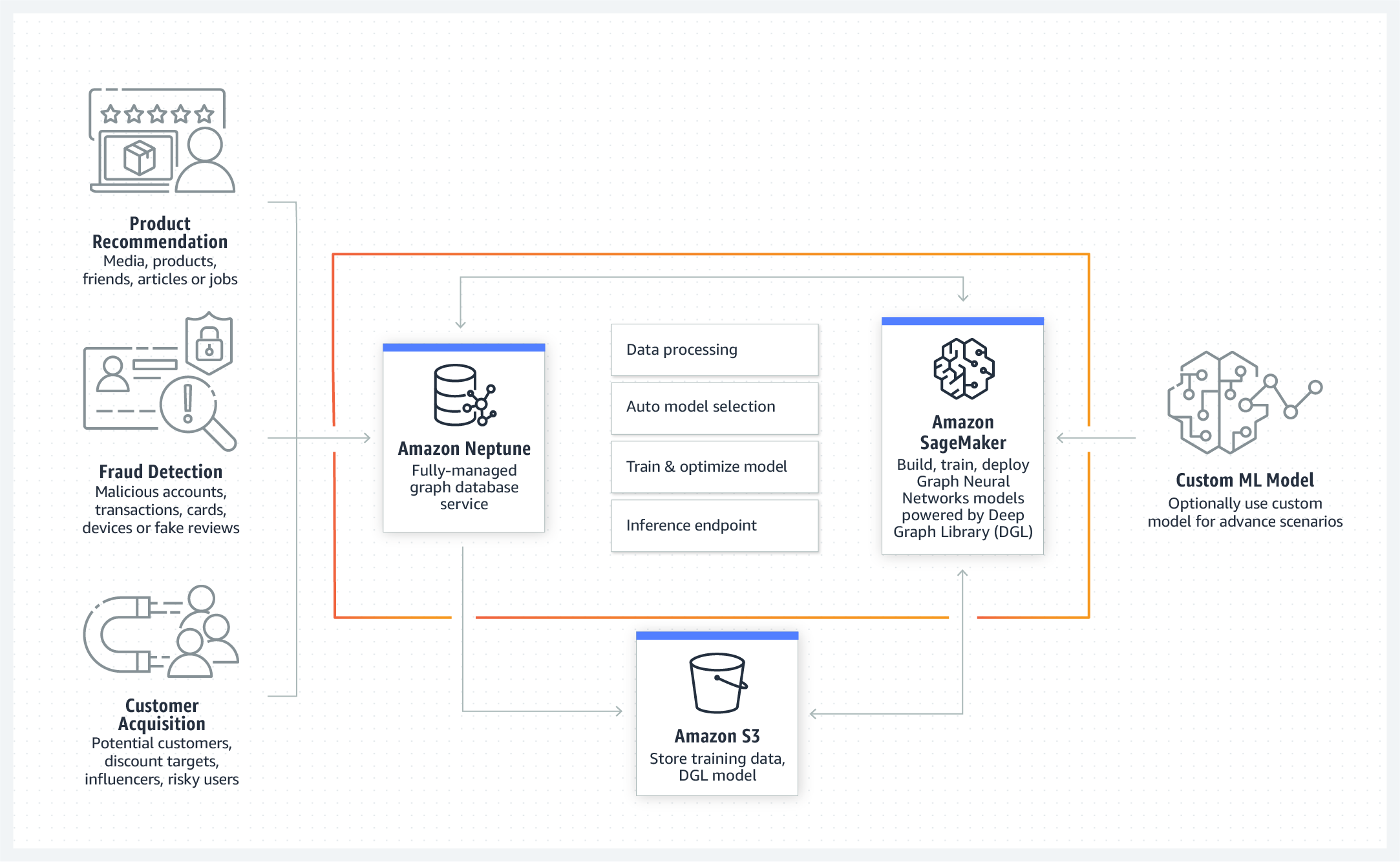- Home›
- Amazon Neptune›
- Machine Learning
Amazon Neptune ML
Easy, fast, and accurate predictions for graphs
Overview
Amazon Neptune ML is a new capability of Neptune that uses Graph Neural Networks (GNNs), a machine learning technique purpose-built for graphs, to make easy, fast, and more accurate predictions using graph data. With Neptune ML, you can improve the accuracy of most predictions for graphs by over 50% when compared to making predictions using non-graph methods.
Making accurate predictions on graphs with billions of relationships can be difficult and time consuming. Existing ML approaches such as XGBoost can’t operate effectively on graphs because they are designed for tabular data. As a result, using these methods on graphs can take time, require specialized skills from developers, and produce sub-optimal predictions.
Using the Deep Graph Library (DGL), an open-source library to which Amazon Web Services contributes, that makes it easy to apply deep learning to graph data, Neptune ML automates the heavy lifting of selecting and training the best ML model for graph data, and lets users run machine learning on their graph directly using Neptune APIs and queries. As a result, you can now create, train, and apply ML on Amazon Neptune data in hours instead of weeks without the need to learn new tools and ML technologies.
Benefits
* Neptune ML uses GNNs to make predictions that can be more than 50% more accurate than non-graph machine learning, based on published research from Stanford University.
Make predictions on graph data without ML expertise
Improve the accuracy of most predictions by over 50% *
* Neptune ML uses GNNs to make predictions that can be more than 50% more accurate than non-graph machine learning, based on published research from Stanford University.
Use cases
Fraud detection
Identity resolution
Knowledge graph
Product recommendation
How it works

Pricing
There are no up-front investments needed. You only pay for the Amazon Web Services resources [WP1] used such as Amazon SageMaker, Amazon Neptune, and Amazon S3.